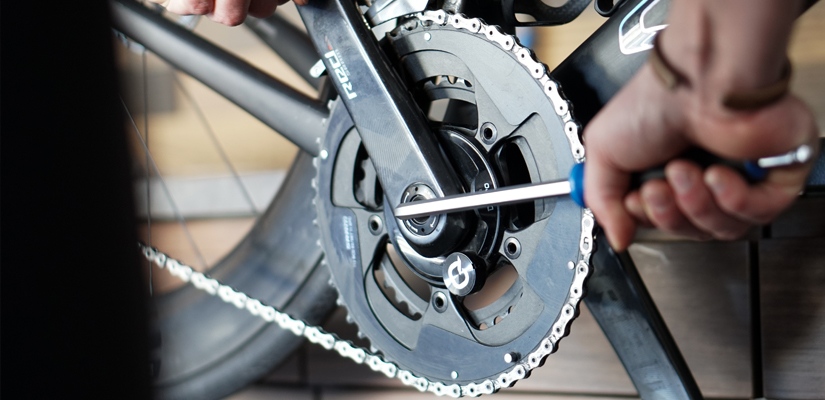How to Clean and Lube Your Chain
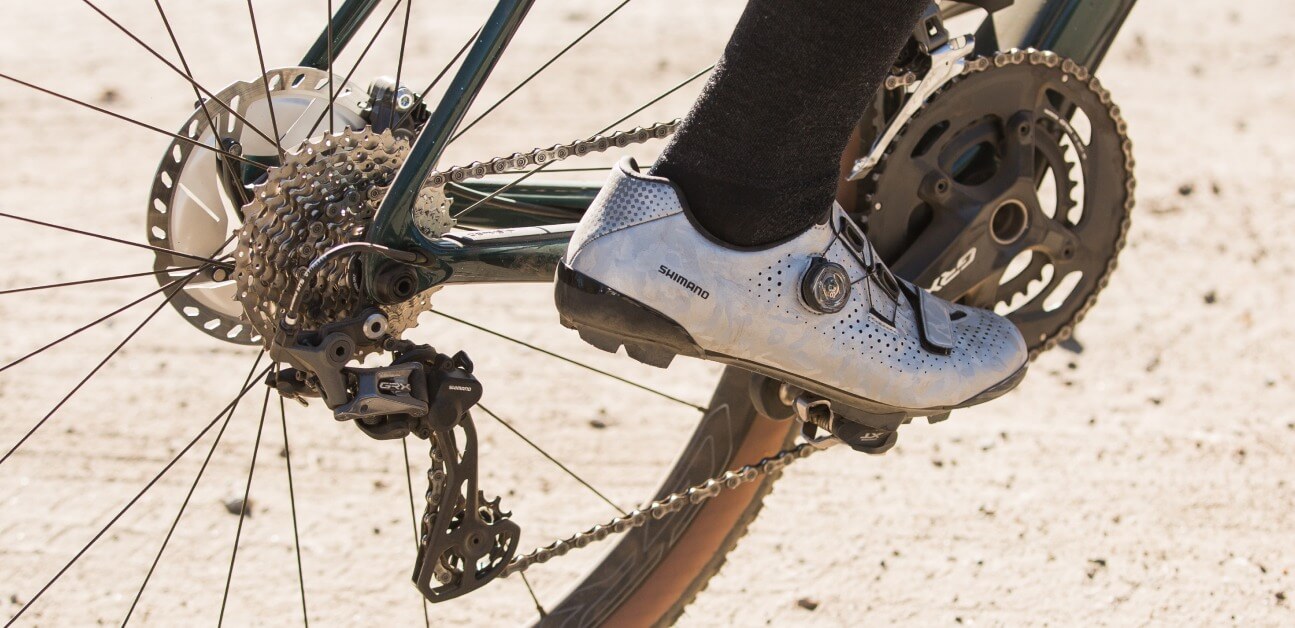
A dirty chain can cause expensive components to prematurely wear out, poor shifting, and lost efficiency—costing you watts. Learn a quick and easy way to clean and lube your chain, so you can keep putting in the hard work.
Why A Clean and Lubed Chain Matters
A bicycle chain is a relatively simple thing at face value. When you examine a small section of chain links, you’ll see a pair of plates with a roller in between being held together with a pin. The roller is a bushing that is the main point of contact around your crankset and cassette. The pressure between the roller and pin is a source of friction, causing energy loss and wear to the chain. Chain lube helps reduce this friction.
But if chain lube reduces friction, why do you need to clean and lube your chain regularly? As you ride, dust and dirt accumulate on the chain. These tiny particles work their way between the roller and pin, effectively acting as an abrasive—further increasing friction.
That friction costs watts and causes wear, both of which we want to avoid. So, aside from looking nice and shiny, a clean and properly lubed chain saves you watts and extends the lifetime of your drivetrain. To ensure you’re getting everything you can out of your chain, you’ll want to clean it, then apply bike-specific chain lube.
What You’ll Need
- Disposable gloves
- Bike specific degreaser
- Chain lube
- Garden hose
- A brush for applying degreaser
- A rag or sponge
- A drying cloth
How to Clean Your Chain
There are plenty of different ways to clean a bike chain. They range from quick and straightforward to time-consuming and complicated. For this guide, we will go with a simple version that you can easily complete at home and in under an hour. It’s a four-step process—prep, apply, scrub, and rinse.
Prep
First, you’ll want to prepare the needed items and your bike. Gather everything you need to make everything convenient. This includes disposable gloves, a bike degreaser, a water source with a hose, a brush to apply the degreaser, and a few cleaning rags or a sponge. It helps if you have a work stand and chain keeper so you can remove the rear wheel, but this can be done without those—just try to keep the degreaser away from any bearing. Cover the caliper with a small food storage bag if you have disc brakes. If you have a gunk build-up on your derailleur jockey wheels, use a toothpick or something similar to remove what you can.
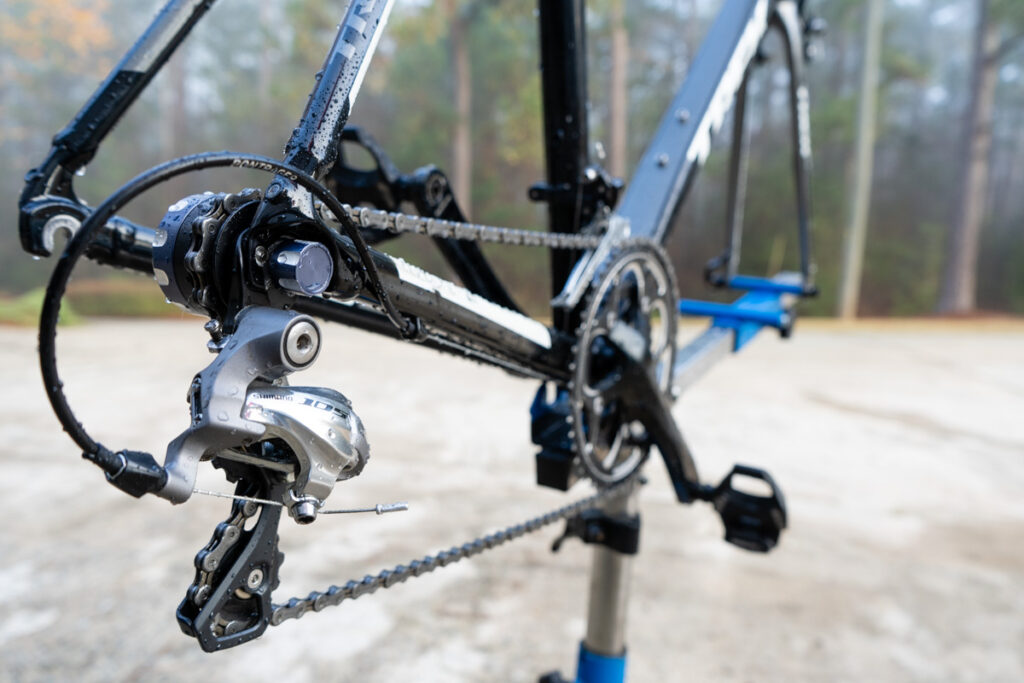
Apply
Now that you have everything prepared, it’s time to apply degreaser to your drivetrain. I pour some degreaser into an old bottle with the top cut off. Using a brush, paint the degreaser on your chain, chainrings, and cassette. Backpedal to get everything covered, including the chainrings, cassette cogs, and derailleur jockey wheels. Now, wait about five minutes to let the degreaser work.
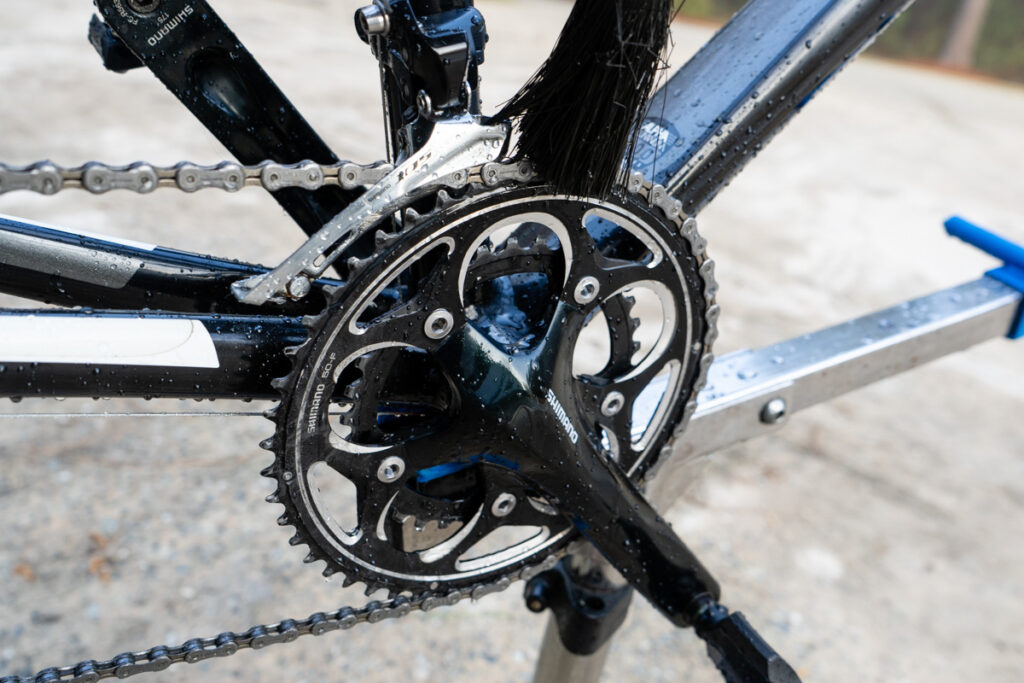
Scrub
After five minutes, it’s time to use some elbow grease to remove the stubborn grit. You can use a stiff brush, rag, sponge, or even a chain cleaning tool. Whatever you choose, scrub the entire length of the chain. You can just hold a rag or sponge in place and backpedal. Make sure to get the whole drivetrain as well.
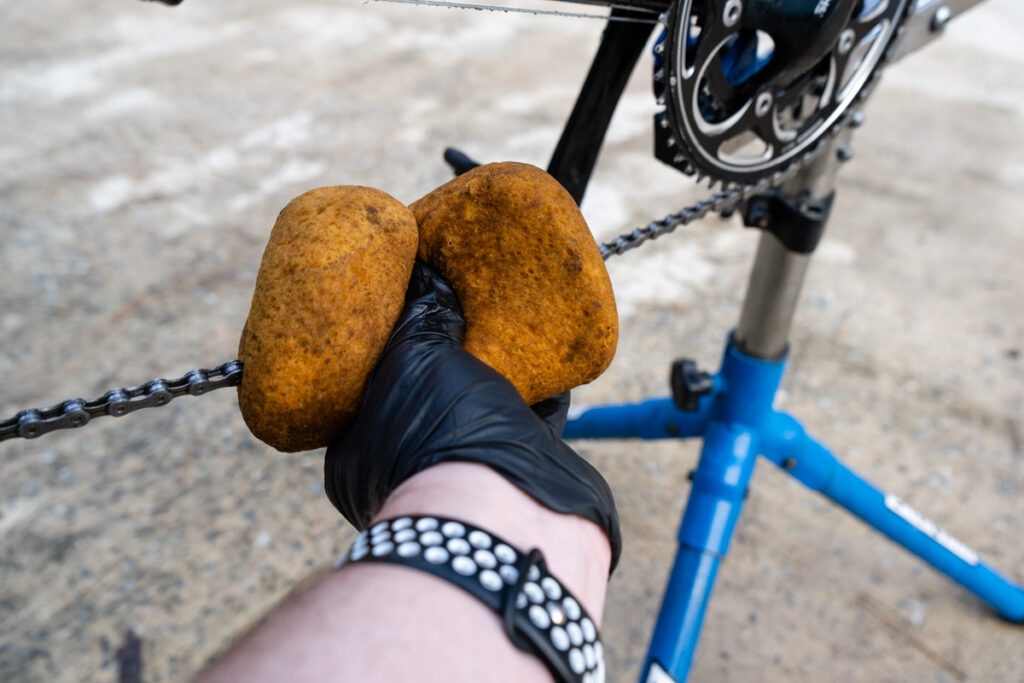
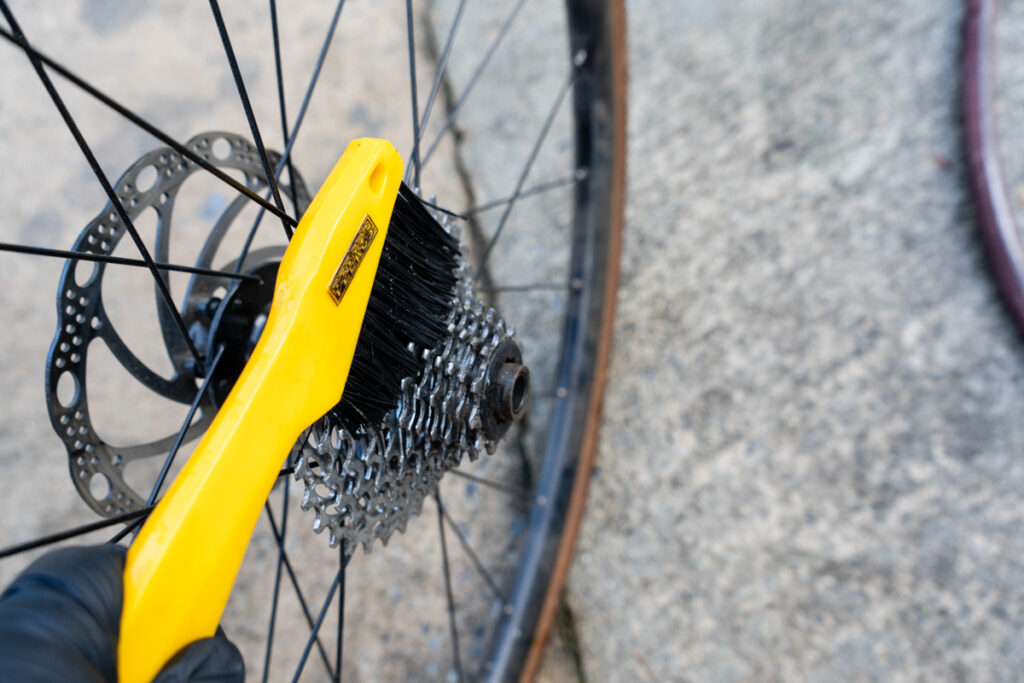
Rinse
Lastly, use a low-pressure garden hose to rinse everything off. Try your best to avoid spraying water directly into your bottom bracket and wheel bearings. Before you apply chain lube, everything must be dry. Wiping it all down with a clean, dry cloth will help speed up the drying process.
How to Lube Your Chain
Lubing your chain is a simple process, but it’s critical to remember a few things. First, chain lubes come in all types with a variety of ingredients. It’s crucial to follow the directions for your specific lube. Also, you’ll want to make sure your chain is clean and dry before applying lube.
Once your chain is completely dry, you’re ready to apply a small amount of chain lube. One of the most common mistakes is using too much. You only need one small drop per roller—just enough to penetrate the rollers.
Apply one drop on the top of each roller on the section of the chain that runs from the derailleur to the chainring. Backpedal and apply until you complete the entire chain. Backpedal enough to work the lube into the chain, then use another rag to wipe off any excess.
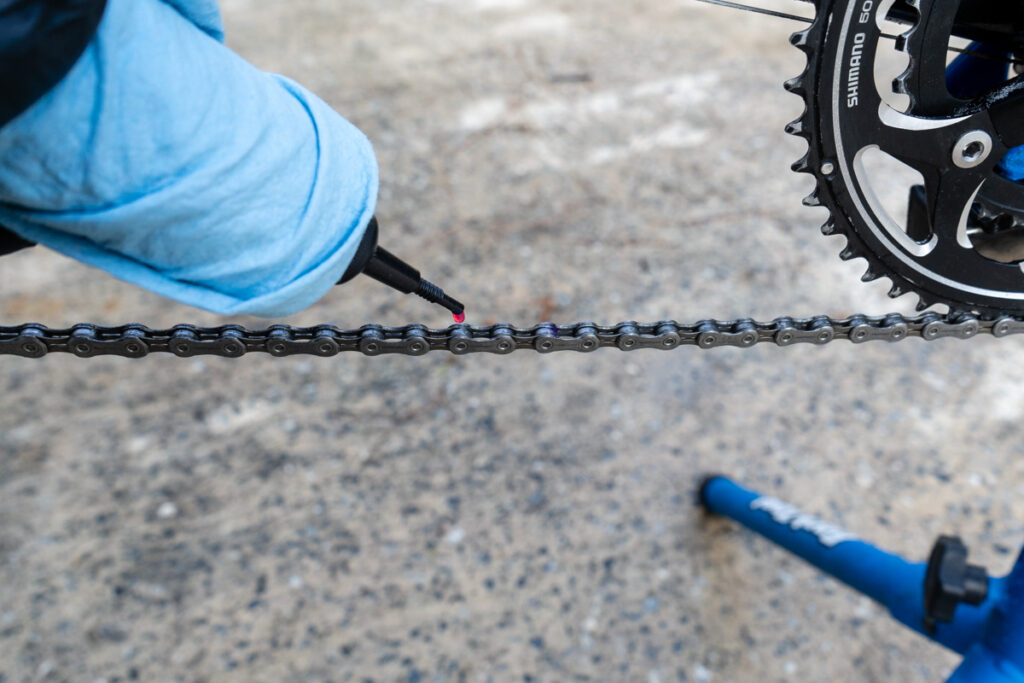
Many chain lubes contain a carrier that allows the lubricant to move inside the roller freely. It eventually evaporates, which is why many manufacturers recommend waiting overnight before riding. When in doubt, follow the instructions on the bottle.
How Often Should You Lube Your Chain
When should you clean and lube your chain? This can vary greatly depending on the type of lube, environmental conditions, and how much you’re riding. Of course, the more often, the better, but a weekly clean and lube will suffice for many cyclists under normal weather conditions. If you’re riding through mud or in the rain, you’ll want to do it as soon as possible.
There are two telltale signs of a chain in need of service. The first is simply based on appearance. If it looks dirty and grimy, it’s time for cleaning. The second sign is how the chain sounds. Lubricant doesn’t last forever and eventually leads to a chirping or squeaking sound while pedaling.
The ideal scenario is to service your drivetrain before it looks dirty or sounds like a small bird. And don’t forget about your bike on the trainer. Riding indoors, chain lube tends to dry out faster than it becomes grimy. Wearing headphones makes it easy to miss the sounds coming from your chain. For a trainer bike, check the drivetrain weekly, and clean an lube as needed.
What is the Best Chain Lube?
Chain lubes come in almost unlimited varieties from numerous brands. To make things more complicated, they are advertised with different additives claiming to make the lube last longer, run cleaner, or reduce friction. To simplify things, we can put lubes into two common categories—dry and wet.
Wet lubes tend to be heavier, last longer, and resist water better than dry chain lubes. However, they attract far more dust and dirt than dry ones. So a simple way to choose is to remember wet lube for wet or rainy conditions and dry lube for dry and dusty environments.
Wax-based lubes are another option but require a different cleaning process to work effectively. For the purpose of this article, we’ll leave those out for now, but you can read more about how to use them on the TrainerRoad Forum.
